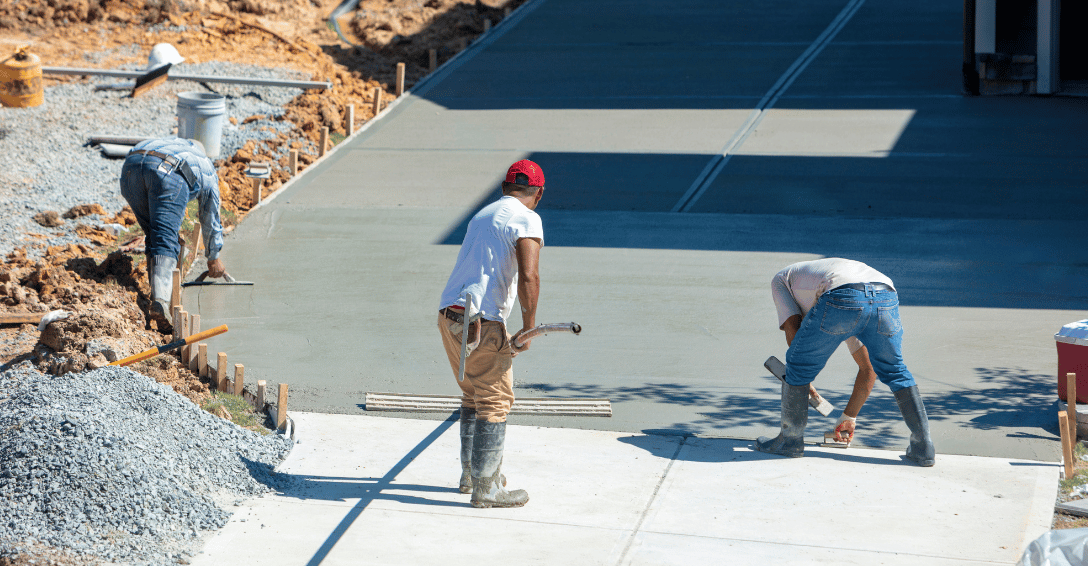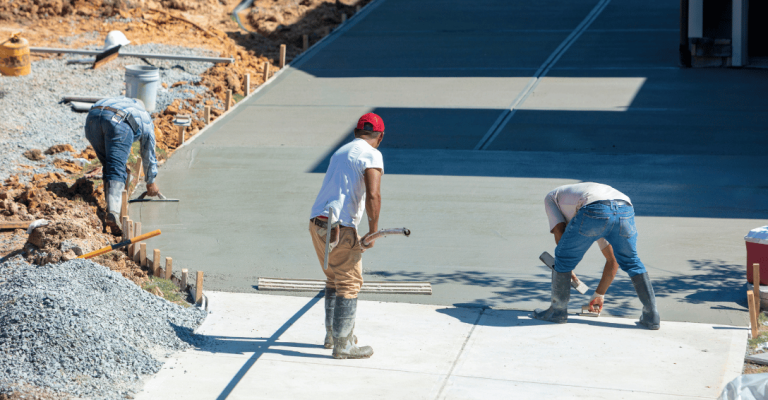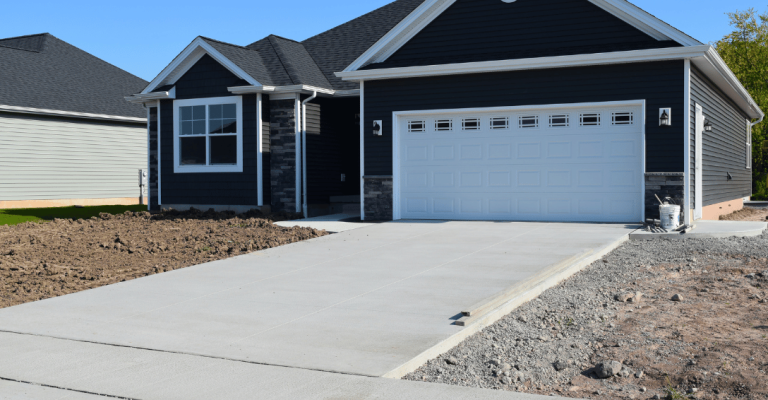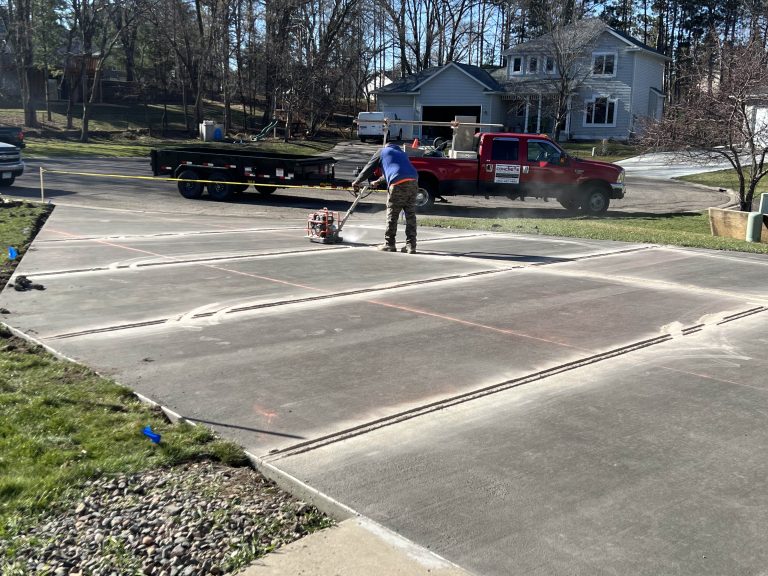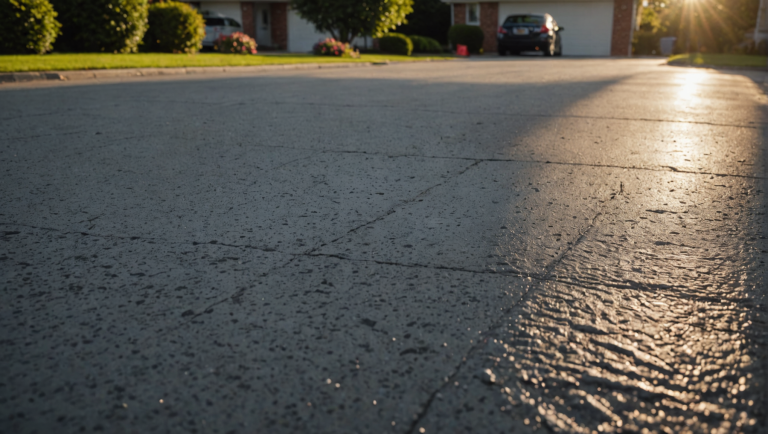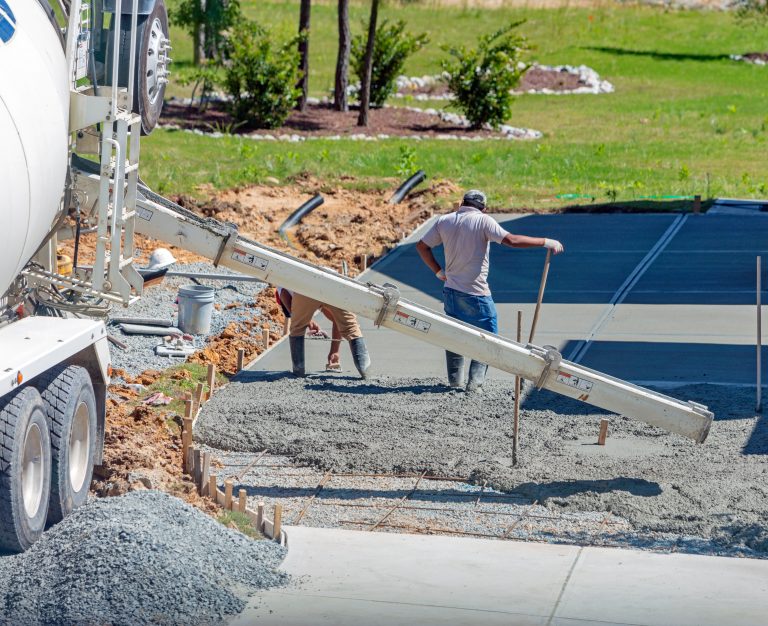Concrete Driveways Common Issues and Solutions Benefit Your Property Longterm
Concrete driveways, undeniably an essential element of any property, are often subjected to a variety of common issues, from cracks and discoloration to uneven surfaces and drainage problems. Addressing these challenges can not only enhance the aesthetic appeal of your property but also greatly contribute to its long-term value. Subsequent sections will provide valuable insights into the causes of these common issues, effective solutions, and preventive measures, with a view to maintaining your driveway’s durability and overall appearance. Keep going, as exploring these insights could be the secret to revealing the potential of your property.
Understanding Concrete Driveway Composition
To fully comprehend the common issues and corresponding solutions for concrete driveways, one must first explore the underlying makeup of this ubiquitous building material. Concrete is a blend of fine and coarse aggregate, cement, and water. The mixture forms a sturdy matrix as the water reacts with the cement, initiating a chemical process known as hydration.
The strength and durability of a concrete driveway are mainly determined by the specific ratios of these components. A balanced combination ensures a dense, solid material with minimal porosity, reducing the likelihood of wear and tear. However, the robustness of the driveway can be compromised if the concrete mix is not appropriately proportioned or if it is improperly cured.
Moreover, the type of aggregate used can also impact the performance of the driveway. Aggregates, typically sand or crushed stone, need to be clean, hard, and free from any substance that may influence the hydration process. It is also vital to take into account the local climatic conditions when selecting the type of cement.
Cracks: Causes and Solutions
Cracks in concrete driveways are a common issue that stem from a multitude of causes, including weather exposure, ground movement, and improper installation.
Unaddressed, these fractures can expand, compromising the structural integrity and lifespan of the driveway.
Our focus will now shift to discussing the various origins of these cracks and exploring the most effective solutions for their repair.
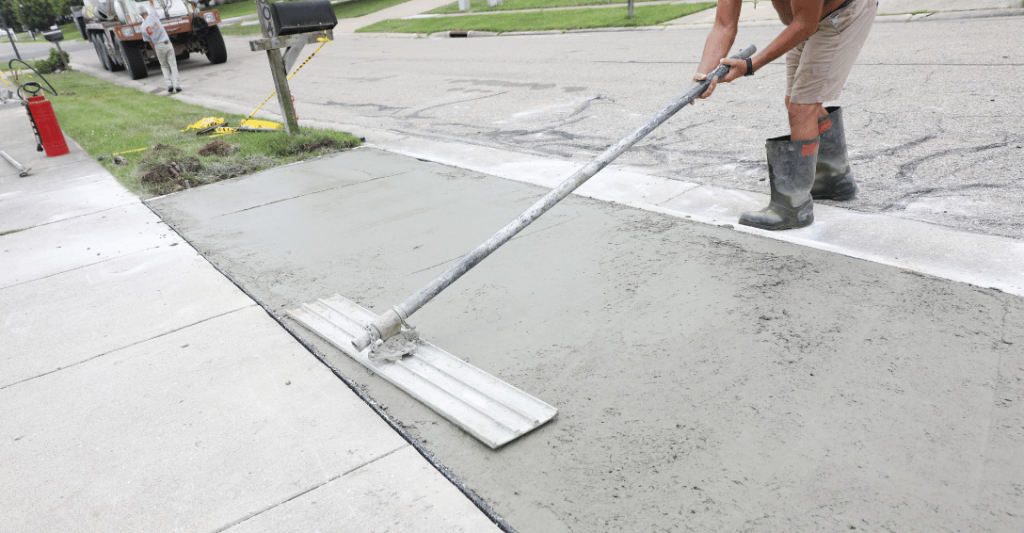
Identifying Crack Causes
A multitude of factors can contribute to the formation of cracks in concrete driveways, which necessitates a detailed understanding of their causes and effective solutions.
The primary culprit often lies in the nature of concrete itself. As a composite material comprising cement, aggregate, and water, concrete undergoes a hydration process that results in shrinkage. This volumetric reduction can lead to tensile stresses within the material and, if these exceed the concrete’s strength, cracking may ensue.
Environmental influences also play a significant role. For instance, freeze-thaw cycles can cause water within the concrete to expand and contract, instigating cracks over time. Similarly, ground movement from clay soil expansion or tree root growth can exert pressure, leading to cracks.
The quality of construction is another critical factor. Poor subgrade preparation, inadequate concrete mix, or improper curing can all contribute to early cracking. Additionally, the absence or improper placement of joints designed to accommodate concrete movements can exacerbate the issue.
Identifying the causes of cracks in concrete driveways is the first step towards maintaining a pristine and functional surface. A thorough understanding of these factors guarantees a more proactive approach in preventing these common yet potentially problematic issues.
Effective Crack Repairs
Having identified the various causes of concrete driveway cracks, it becomes imperative to explore effective repair strategies that guarantee the longevity and functionality of the surface.
In the domain of concrete repair, a strategic approach to crack rectification often involves the use of epoxy injection or routing and sealing techniques.
Epoxy injection is particularly suitable for smaller, hairline cracks. It involves injecting a high-strength epoxy resin into the crack, effectively bonding the concrete together and restoring its structural integrity. This method is beneficial because it not only seals the crack but also strengthens the weakened area to resist future damage.
On the other hand, routing and sealing is a more traditional repair method, ideal for larger, more prominent cracks. The procedure entails enlarging the crack and filling it with a flexible sealant. This provides a waterproof barrier and helps prevent the intrusion of water and de-icing salts, the primary culprits of crack enlargement and concrete degradation.
Handling Concrete Discoloration
Concrete discoloration is a prevalent issue in driveway maintenance. It can be attributed to a variety of factors ranging from improper curing to inconsistent mixing.
In order to effectively address this problem, we must first understand its root causes and subsequently explore preventative measures.
This segment will focus on elucidating the causes of concrete discoloration and the technical interventions available to prevent such occurrences.
Causes of Discoloration
Discoloration, a common issue with concrete driveways, can be attributed to a variety of factors including improper curing, differences in mix ingredients, and weather conditions. Concerning improper curing, the hydration process in concrete is critical to achieving a uniform color. Variations in the curing process can lead to uneven hydration and consequently, discoloration.
Discrepancies in the mix ingredients also play a role in discoloration. Any difference in the composition, such as alterations in the type or amount of cement, aggregate, or admixtures, can lead to inconsistent coloration. It’s important to mention that water-cement ratio is a critical factor as well. A higher ratio can dilute the color, leading to a lighter shade, while a lower ratio can result in a darker shade.
Lastly, weather conditions are also influential in the discoloration of concrete driveways. High temperatures can cause rapid evaporation, leading to efflorescence or a white, powdery residue on the surface. Cold temperatures, on the other hand, can slow down the curing process, leading to a darker appearance.
Understanding these causes can help diagnose the underlying issues contributing to discoloration, thereby enabling the implementation of appropriate solutions.
Discoloration Prevention Techniques
To effectively mitigate the issue of discoloration, various prevention techniques can be applied during the construction and maintenance of concrete driveways. The first step involves a uniform and consistent mix of concrete ingredients, ensuring all elements are thoroughly integrated. This prevents color discrepancies, which often stem from unevenly distributed pigments or aggregates.
Proper curing techniques are also integral to discoloration prevention. Curing should occur in a controlled environment, free from extreme weather conditions that can affect the hydration process. In addition, application of a quality curing compound can aid in maintaining consistent moisture levels, essential for homogeneous color development.
The application of a sealer is another critical prevention technique. Sealers not only provide a protective layer against stains and weather effects, but they also enhance the color uniformity of the concrete surface. It is advisable to choose a sealer that corresponds to the specific type and color of concrete used.
Lastly, regular maintenance and cleaning routines can notably reduce the risk of discoloration. Routine power washing, combined with the use of pH-neutral cleaners, will help preserve the original color of your concrete driveway, ensuring its aesthetic appeal and longevity.
Fixing Uneven Concrete Surfaces
Addressing the issue of uneven surfaces in concrete driveways often requires a thorough understanding of the underlying problem and its effective solutions. Uneven concrete surfaces typically result from subpar installation processes, including poor compaction of the subgrade, improper concrete mixture, or insufficient curing time.
To rectify uneven surfaces, concrete repair professionals may employ a technique known as mudjacking or slabjacking. This involves injecting a mixture of soil, cement, and water beneath the concrete slab to lift it and restore an even surface. This technique offers a cost-effective, long-term solution that minimizes further damage and enhances the driveway’s aesthetic appeal.
Alternatively, concrete grinding is a viable option for minor surface irregularities. This process utilizes a concrete grinder to smooth out high spots and create a uniform surface. However, this method is not suitable for extensive unevenness as it can lead to further thinning and potential cracking of the slab.
Dealing With Drainage Problems
While rectifying uneven surfaces is a common concern, another frequent issue that warrants attention in concrete driveways is the occurrence of drainage problems. These are often the result of inadequate slope or poor planning during the installation process. Water that fails to drain properly can pool on the surface, leading to structural damage and potentially hazardous conditions.
The most effective solution to drainage issues is proper grading. This involves adjusting the level of the driveway to encourage water flow away from the property. It is generally recommended that a slope of at least 1% (1 inch of drop per 8 feet of distance) is maintained. In some cases, this may not be possible due to existing structures or landscape features. In such instances, installing trench drains or catch basins may be required.
Another possible solution is the application of a high-quality sealant. This provides a water-resistant barrier that helps to prevent moisture absorption and subsequent damage. However, this is a temporary fix and does not address the root cause of the problem.
The Importance of Regular Maintenance
Regular maintenance, often overlooked, plays a vital role in extending the longevity of concrete driveways and mitigating common issues such as cracking, staining, and surface wear. This involves a systematic and scheduled approach that incorporates visual inspection, cleaning, repair, and protective measures.
A visual inspection helps identify early signs of wear and tear, enabling timely interventions. Spotting cracks and fissures in their infancy, for instance, allows for immediate repairs, preventing further deterioration. Staining, another common issue, can be addressed promptly to preserve the aesthetics of the driveway.
Cleaning, a fundamental maintenance task, removes corrosive substances such as oil, salt, and deicing chemicals, thereby reducing surface degradation. This process also uncovers hidden cracks or stains that may have been previously unnoticed.
Repairs, typically involving filling of cracks or resurfacing, are essential to maintain structural integrity. Use of quality materials and appropriate techniques ensures the repair’s durability.
Lastly, protective measures such as applying a quality sealant, offer a layer of defense against harsh elements, reducing wear and tear. This helps maintain the surface quality and prolongs the lifespan of the concrete driveway.
In essence, regular maintenance is not a choice but a necessity for homeowners desiring a long-lasting, functional concrete driveway.
Long-term Benefits of a Well-Maintained Driveway
Maintaining the integrity of a concrete driveway through regular upkeep not only secures its functionality but also yields several long-term benefits, establishing it as a worthwhile investment for homeowners. These long-term benefits present themselves in multiple facets of property ownership, creating a sense of belonging and satisfaction.
One of the key benefits is enhanced curb appeal, which is the aesthetic attractiveness of a property when viewed from the street. A well-maintained driveway contributes significantly to this appeal, creating a positive first impression. Additionally, a good state of the driveway ensures safety by preventing accidents caused by cracks or uneven surfaces.
Below is a table illustrating these benefits:
| Benefit | Description |
|---|---|
| Curb Appeal | A well-maintained driveway enhances the aesthetic attractiveness of the property. |
| Safety | Regular maintenance secures the driveway is free from hazards like cracks or uneven surfaces. |
| Longevity | Consistent upkeep extends the driveway’s lifespan, reducing the need for costly replacements. |
| Increased Property Value | A well-maintained driveway can add value to the property. |
Incorporating Driveway Upgrades for Property Value
Significant improvements in property value can be attained by strategically integrating upgrades to your concrete driveway, thereby enhancing the overall attractiveness and functionality of your home. Concrete driveways, when enhanced with relevant upgrades, extend not only the aesthetic allure but also contribute towards the longevity of the property.
The first step of this value-addition process is the selection of quality materials. High-strength concrete, for instance, offers increased durability, reduces maintenance needs, and adds to the property’s curb appeal.
Next, consider the driveway design. A well-thought-out layout that complements your home’s architectural style can greatly enhance property value. Textured or patterned concrete, or incorporating decorative elements like stamped borders or colored inlays can further elevate aesthetic appeal.
Lastly, proper installation and maintenance are crucial. Professional installation ensures peak performance and longevity. Regular maintenance, including sealing and repairs, protects the surface and prevents damage, thereby preserving the investment.
Therefore, strategic upgrades to a concrete driveway can bring substantial long-term benefits. They not only enhance the visual appeal and functionality but also increase your property’s market value, making it a worthwhile investment for homeowners seeking to belong in a community of well-maintained, valuable properties.
Frequently Asked Questions
Can DIY Concrete Driveway Repairs Be as Effective as Professional Ones?
While DIY concrete driveway repairs can temporarily fix minor issues, professional repairs guarantee longevity and structural integrity. Experts use quality materials and techniques that outlast DIY efforts, making them more cost-effective in the long run.
How Does Weather Affect the Lifespan of a Concrete Driveway?
Weather greatly impacts the lifespan of a concrete driveway. Extreme temperatures cause expansion and contraction, leading to cracks. Rainwater can cause erosion, while freeze-thaw cycles can result in surface scaling, reducing the driveway’s durability and aesthetics.
What Are the Best Concrete Sealants to Use for Driveway Maintenance?
Selecting a top-quality concrete sealant is essential for efficient driveway maintenance. Penetrating sealers, such as siloxane, silane, and siliconates, are often the best choices due to their durability, water resistance, and effectiveness in preventing surface damage.
Are There Eco-Friendly Alternatives to Traditional Concrete for Driveways?
Yes, eco-friendly alternatives to traditional concrete for driveways exist. Permeable pavement enables water absorption, reducing runoff. Recycled concrete and glass also provide green solutions, contributing to waste reduction and fostering community commitment to environmental responsibility.
How Often Should a Professional Inspection of a Concrete Driveway Be Done?
A professional inspection of a concrete driveway should ideally be conducted every two to three years. This guarantees early detection of potential issues, maintaining the driveway’s integrity and enhancing your property’s value over the long term.

